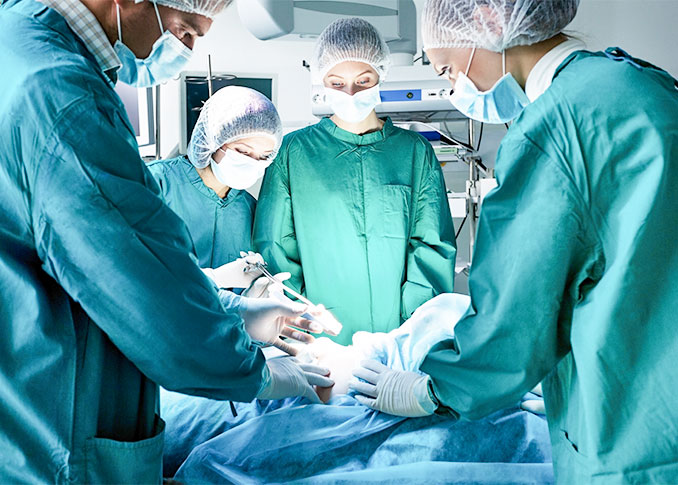
Surgical Market
Supplying Reliability During Surgical Procedures
Fluid management components play a critical role in surgical applications by ensuring precise control, distribution, and removal of fluids during medical procedures. These components are essential for maintaining a controlled and sterile environment, optimizing visibility for surgeons, and promoting patient safety.
The use of luers, stopcocks, check valves, and swabable valves in surgical applications contributes to the success of various medical procedures across different specialties.
Fluid Components in Surgical Settings
Surgical procedures often involve the administration of fluids, such as medications, irrigation solutions, or contrast media. Luers, stopcocks, and valves enable precise control over the flow and distribution of these fluids. Surgeons can regulate the rate and volume of fluid delivery, ensuring accuracy in medication administration and irrigation.
Maintaining a sterile field is crucial during surgery to prevent infections and complications. Swabable valves and other sealed components provide access points for necessary interventions without compromising the sterility of the surgical environment. This helps reduce the risk of postoperative infections and ensures optimal healing conditions.
In various surgical specialties, including cardiovascular, neurology, and ophthalmic surgery, the management of fluid pressure is crucial. Stopcocks and check valves help regulate pressure, preventing unwanted backflow and maintaining consistent fluid dynamics. This is particularly important in procedures involving delicate tissues and organs.
Clear visualization is essential for surgeons to perform precise and effective procedures. In procedures such as arthroscopy or endoscopy, where cameras are used for internal imaging, proper fluid management helps ensure a clear field of view by controlling the removal of fluids, debris, and blood.
Different surgical specialties have unique fluid management requirements. For example, in urology, components aid in catheterization and drainage systems, while in gastrointestinal procedures, they help control the flow of irrigation fluids and contrast media. Tailored fluid management solutions contribute to the success and safety of procedures in each specialized field.
Accurate fluid management is integral to patient safety. Components like swabable valves prevent the inadvertent introduction of air or contaminants into the patient's bloodstream or body cavities. This helps minimize the risk of complications such as embolisms or infections.
ISO 80369 Compliant Parts
ISO 80369 standards address specific healthcare applications, such as neuraxial, enteral, and respiratory systems, ensuring that connectors are uniquely shaped to prevent interchangeability. The implementation of ISO 80369 compliant components in surgical settings mitigates the potential for medical errors, improves workflow efficiency, and contributes to the overall standardization of medical devices, fostering a safer and more reliable healthcare environment.
Surgical Applications
Learn more about how fluid components ensure precise fluid management, maintain a controlled surgical environment, and promote the safety and success of various surgical procedures.
